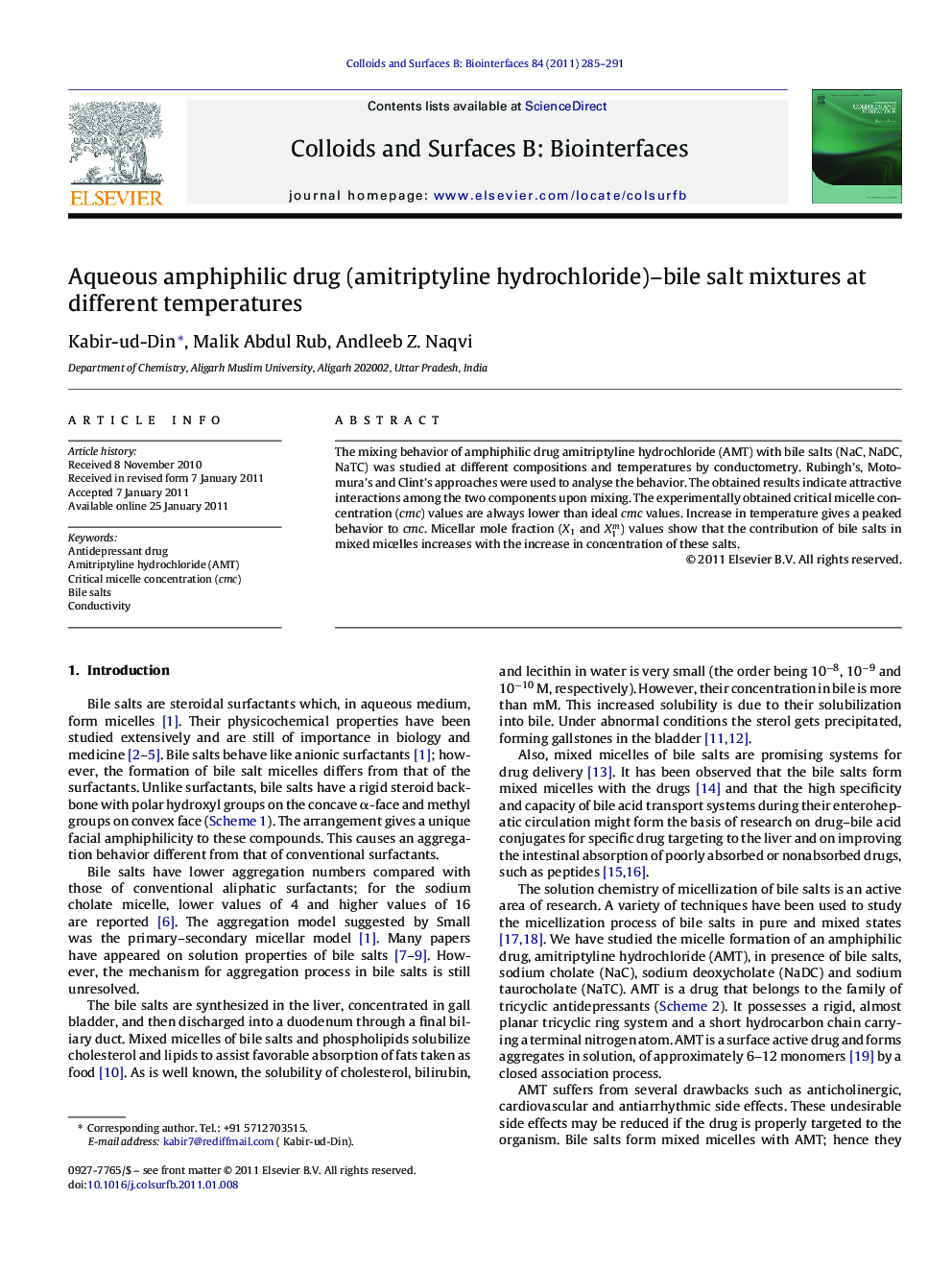| Article ID | Journal | Published Year | Pages | File Type |
|---|---|---|---|---|
| 601129 | Colloids and Surfaces B: Biointerfaces | 2011 | 7 Pages |
The mixing behavior of amphiphilic drug amitriptyline hydrochloride (AMT) with bile salts (NaC, NaDC, NaTC) was studied at different compositions and temperatures by conductometry. Rubingh's, Motomura's and Clint's approaches were used to analyse the behavior. The obtained results indicate attractive interactions among the two components upon mixing. The experimentally obtained critical micelle concentration (cmc) values are always lower than ideal cmc values. Increase in temperature gives a peaked behavior to cmc. Micellar mole fraction (X1 and X1m) values show that the contribution of bile salts in mixed micelles increases with the increase in concentration of these salts.
Graphical abstractFigure optionsDownload full-size imageDownload as PowerPoint slideResearch highlights► Bile salts are generally used as drug carriers in pharmaceuticals but their presence may alter the micellization tendency of a drug as bile salts form mixed micelles with the drug: this may affect the activity of the drug. ► Therefore, it is important to have knowledge of the effect of bile salts on micelle formation of drugs and the related energetics. ► Although there is a vast literature on micellization of drugs in aqueous medium, but detailed reports on effect of bile salts on drug micellization are scarce. ► Keeping this in mind, effect of bile salts’ concentration and temperature on the micellization of an antidepressant drug, amitriptyline hydrochloride is seen.
